Eye Pressure can cause Optic Nerve Damage
About glaucoma
Complementary Care
Cardiovascular risk
Elevated eye pressure (intraocular pressure) can cause damage to the optic nerve and is one of the risk factors for glaucoma and other vision conditions. In general ophthalmologists consider 10 mmHg to 20 mmHg to be normal pressure.
Note: Narrow angle glaucoma, characterized by sudden red eye(s) with visual halos and headache, sometimes nausea, is an ocular emergency. If you have these symptoms you should go immediately to the emergency room and call your eye doctor.
Vitamins
& Supplements
Not sure which to get?For help call us at 845.475.4158
Complete Product List
On a tight budget?
We recommend
Viteyes Optic Nerve Support Formula - 90 tablets
Discount Packages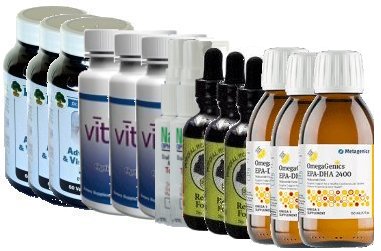 Optic Nerve A-Support Package 2 (3 months) Optic Nerve A-Support Package 2 (3 months)Optic Nerve Support Package Saves 10% off retail 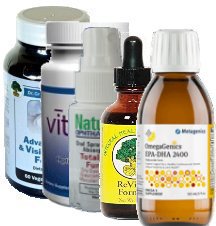 Optic Nerve A-Support Package 1 Optic Nerve A-Support Package 1Optic Nerve Support Package Saves 10% off retail 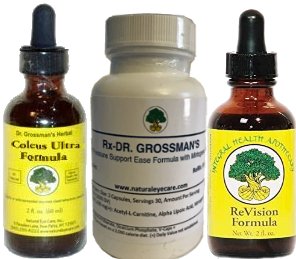 Optic Nerve Eye Pressure Support Package 1 Optic Nerve Eye Pressure Support Package 1 Optic Nerve Support for Pressure Discount Package saves 10% off retail 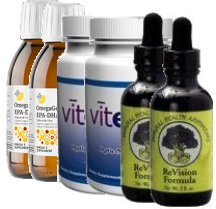 Optic Nerve GNA-Support Package (2 months) Optic Nerve GNA-Support Package (2 months)Optic Nerve Support Package 10% off 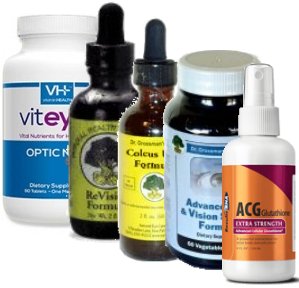 Optic Nerve Support Package A Optic Nerve Support Package AOptic Nerve Support Package Saves 10% off retail 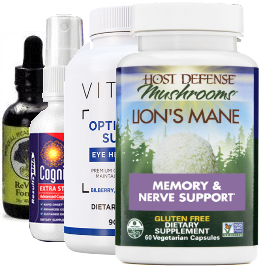 Optic Nerve Regen Package 1A Optic Nerve Regen Package 1ASupport package for optic nerve nourishment & regeneration support - 10% off retail 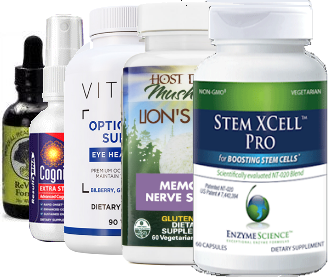 Optic Nerve Regen Package 2A with Stem Cell Support Optic Nerve Regen Package 2A with Stem Cell SupportSupport package for optic nerve nourishment & regeneration. 10% off retail. 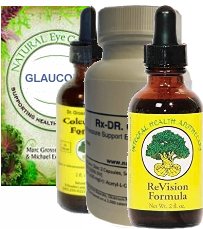 Natural Eye Care Series: Glaucoma and Optic Nerve Support Package Natural Eye Care Series: Glaucoma and Optic Nerve Support PackageGlaucoma (paperback) book and lens support nutrient package |
Essential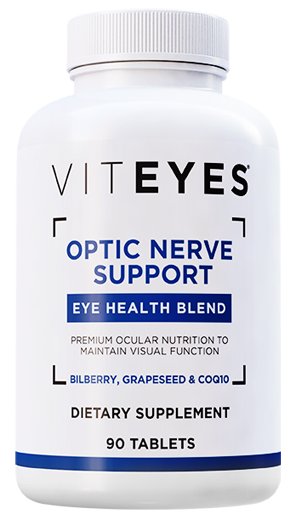 Viteyes Optic Nerve Support Formula - 90 tablets Viteyes Optic Nerve Support Formula - 90 tabletsSupports healthy optic nerve function |
Essential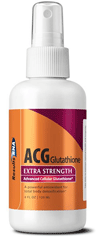 ACG Glutathione EXTRA STRENGTH Spray 2oz. ACG Glutathione EXTRA STRENGTH Spray 2oz. Glutathione Spray antioxidant for eye and overall health. Vegan and GMO Free. |
Essential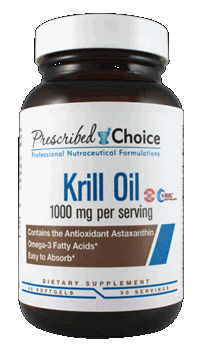 Krill Oil, 1000mg 60 softgels Krill Oil, 1000mg 60 softgelsHigh quality omega-3 fatty acid formula with astaxanthin. |
Very Important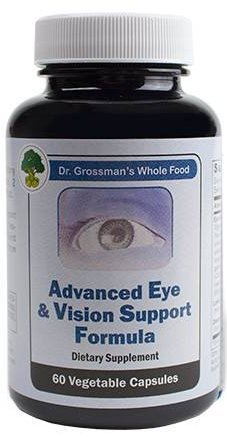 Advanced Eye & Vision Support Formula (whole food) 60 vcaps Advanced Eye & Vision Support Formula (whole food) 60 vcapsWhole food, wild crafted herbal vegetarian formula with vision antioxidants, chemical- and preservative-free. |
Very Important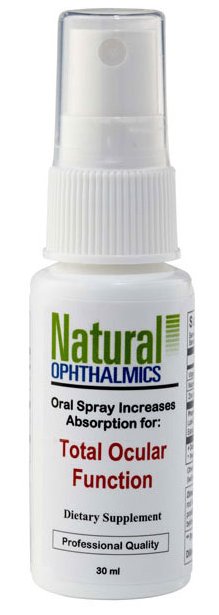 Total Ocular Function Oral Spray 30ml Total Ocular Function Oral Spray 30mlSpray formula of vision nutrients |
Very Important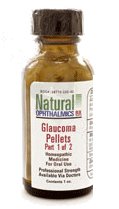 Glaucoma Homeopathic (Oral) Pellets Glaucoma Homeopathic (Oral) PelletsOUT OF STOCK UNTIL THE FALL |
Very Important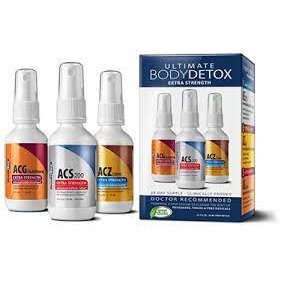 Ultimate Body Detox Extra Strength 4oz Bottles Ultimate Body Detox Extra Strength 4oz BottlesDetoxification program to support the immune system |
| Very Important Anti-glycating nutrient for eye and cardiac support. |
Very Important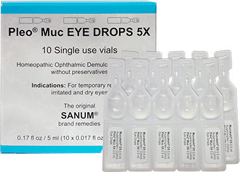 Pleo-MUC (Mucokehl) eye drops 5X (10 Single Vials) Pleo-MUC (Mucokehl) eye drops 5X (10 Single Vials)Natural homeopathic eyedrops to support circulation and decongestion in the eyes. |
Treatment
Medications
People with glaucoma are typically put on medications that lower intraocular pressure (IOP) in the eyes. Sometimes surgery is appropriate to address structural issues.
There are basically two categories of glaucoma eyedrops prescribed by eye doctors:
- Beta-blockers that lower eye pressure by reducing the amount of aqueous fluid in the eye, and
- alpha-agonists and prostaglandin analogs that improve the outflow of the aqueous fluid. These modern eyedrops tend to have fewer side effects than the beta-blockers.
There are both preservative and preservative-free options. Preservative-free eyedrops are recommended for glaucoma because patients notice less discomfort compared to eyedrops with preservatives, and because they lower the risk of ocular surface disease.19
Surgical options
In addition to traditional glaucoma surgery, there are a number of surgical options for specific areas of concern: argon laser trabeculoplasty (ALT), selective laser trabeculoplasty (SLT), laser peripheral iridotomy (LIP), or cycloablation. Traditional surgery includes trabeculectomy, drainage implant surgery, and nonpenetrating surgery.
Caution. Note that acute angle-closure glaucoma must be monitored closely by your eye doctor as it can result in an eye stroke. If you're diagnosed with this condition, you'll need urgent treatment to reduce the pressure in your eye. This generally will require both medication and laser or other surgical procedures.
Optogenetics
Brain and vision researchers have been looking into optogenetics to regulate intraocular pressure. Optogenetics is the use of light plus genetic engineering to regulate IOP. Researchers have found that in this way they can regulate biochemicals called phosphoinositides which are critical for aqueous humor balance.25
Complementary approach
There are a number of life style choices you can make to help protect the optic nerve and overall vision, and even lower intraocular pressure to complement what your eye doctor recommends.
Nutrients
I have glaucoma in my right eye. The pressure in that eye started at 19. Because I take Dr. Grossman's supplements the pressure is now 10 and has been that low for at least 2 years. My eyes are stable. My visual perception test is the best it has ever been. I take Optic nerve support, vision support and pressure formula. THEY WORK! I do not need surgery! --V.M., 2024
Oxidative stress and free radicals may play an important role in the onset of glaucoma by causing damage to the trabecular meshwork responsible for effective outflow of the aqueous fluid, and the retinal ganglion cells.20,21 The optic nerve requires healthy circulation to the eyes and essential nutrients to maintain cell integrity and good vision. Research has shown that circulation to the optic nerve is poorer for those with glaucoma, particularly for normal or low-tension glaucoma. Glaucoma is not just a matter of normal IOP but also of keeping the optic nerve properly nourished. Antioxidants play many roles to help reduce oxidative stress and damage due to free radicals, protect the trabecular meshwork, and support healthy circulation to the optic nerve.
- Green leafy vegetables. A diet rich in green leafy vegetables is one of the most important prevention methods for glaucoma. Researchers evaluating the diets of over 100,000 health professionals over a 26 to 28 year period found that those people who included the highest levels of green leafy vegetables in their diets had a 30% lowered risk of primary open angle glaucoma than subjects with lowest levels of leafy greens in their diets. These subjects also had a 40 to 50% lower risk of developing early paracentral visual field loss.14
- Regular Exercise is tied to a lower risk of glaucoma. Exercise such as a regular brisk walk is about as helpful as using beta-blockers medication for glaucoma. A brisk 40 minute walk 5 days a week is a good target.1 Research has shown that glaucoma patients who take a brisk, 40-minute walk five days a week for three months can reduce the pressure in their eyes by approximately 2.5 millimeters - similar to the reduction seen when using beta-blockers.2
- Coleus forskohlii. Researchers find that the active ingredient in coleus, forskolin, can help lower intraocular pressure and support the health of the retinal nerve ganglions and the optic nerve.16, 17.
- Antioxidants protect cells and membranes in the eye from free-radical damage. Free radicals are atoms that are lacking an electron. This makes them very unstable. In their attempt to become stable, they attack other cells and try to "steal" an electron. This attack harms the cells' delicate membranes, thereby making them a target for disease. Important antioxidants and antioxidant-like nutrients include vitamins: C and E and carotenoids, and nutrients alpha lipoic acid, CoQ10, and glutathione (preferably taken in a sublingual formulation). Vitamin C helps keep the trabecular meshwork from being blocked.10
- Amino acids. Important amino acids include taurine (concentrated in the eye and found in the optic nerve), glutathione (one of the most important antioxidants in the eye) and cysteine (taken as N-acetyl-cysteine). These nutrients assist the Liver in producing glutathione.
- Flavonols. Quercetin is a bioflavonoid which supports vision and the optic nerve.
- Vitamins C & E give antioxidant support. Vitamin B12 supports the nervous system and nerve health. Vitamin B3 (niacin) may have a protective effect.18 A combination of B6, B9 and B12 helps to lower homocysteine levels that are linked to higher risk of developing glaucoma.22
- Herbs such as gingko biloba,23 and a combination of bilberry and maritime pine bark24 have been demonstrated to be helpful.
- Minerals such as magnesium may be helpful. Magnesium improves microcirculation in glaucoma patients and may protect the retinal ganglion cell against oxidative stress and cell death.
- Essential fatty acids can help reduce the chronic inflammatory processes associated with glaucoma.
- Digestion & vitamins Make sure to follow these tips for taking vitamins and maintaining good digestion. Always take vitamins with food. Digestive enzymes are stimulated when eating and aid in nutrient absorption.
- If you must take glaucoma medication, note that alpha lipoic acid has been found to help prevent the conjunctiva scarring caused by some glaucoma medications. See the research.
- Note that these drugs have been associated with causing or aggravating glaucoma.
- Pay attention to these critical prevention measures for glaucoma and other vision conditions.
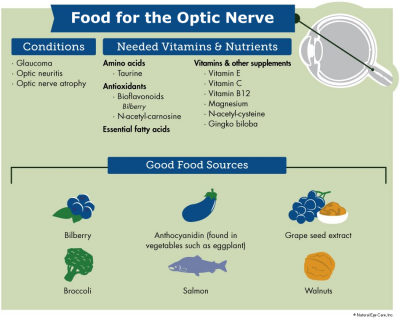
What causes intraocular pressure to fluctuate?
Exercise
- Exercise decreasing pressure. Researchers have found that some forms of exercise reduce intraocular pressure - both mild forms of exercise such as tai chi, walking, dancing, yoga, and pilates and more obviously vigorous exercise such as jogging and aerobics. One study looking at student runners found that eye pressure was reduced by 4 mmHg after running.1 Another concluded that including aerobic exercise in one's routine decreases intraocular pressure.2 And a third study looked at exercise under several controlled circumstances and found that the amount of pressure decrease was associated with the degree of intensity of exercise.3
- Some yoga increases pressure Some yoga postures with a head down position increase intraocular pressure. One study looked specifically at four specific postures which were
held for two minutes. Adho Mukha Svanasana (down dog), Uttanasana (forward bend), Halasana (plow), and Viparita Karani (legs-up-the-wall) all increased
intraocular pressure measured at two minutes. Down dog yielded the highest increase in glaucoma patients (~11 mmHg) with a slighter greater increase in
patients without glaucoma (~12mmHg). For glaucoma patients/non-glaucoma patients forward bend resulted in ~10mmHg/~8mmHg; plow resulted in ~6mmHg/~4mmHg; and legs-up-the-wall resulted
in ~3mmHg/~3mmHg. The IOPs returned to the baseline measurement within sitting for two minutes.15
Our recommendation is that if you do yoga and have a history of open-angle glaucoma where the eye pressure tends to be above normal (IOP), you either avoid these postures or do them for a shorter period of time such as 10-15 seconds. Of course always check with your eye doctor as well. - Exercise increasing pressure. Researchers also found that eye pressure may increase due to some forms of exercise, such as doing bench presses (heavy weights), even more so if the subject inadvertantly held their breath while lifting.4
- Exercise in sedentary people. Even for people who do not get sufficient exercise, walking and jogging both decrease intraocular pressure.5
Other variants
- Normal variation. When researchers monitored eye pressure over 24 hour periods, noting the high eye pressure often occurs outside doctors' office hours, they found pressure to be higher in 2/3rds of the patients when they were sleeping at night.6, 7
- Heart rate. Although pressure has been found to decrease after exercise, it is not necessarily correlated with heart rate.8
- Respiration. Interestingly, one researcher found that after subject breathed through only the right nostril, eye pressure statistically significantly decreased.9 Not surprisingly, different forms of artificial respiration used during surgery brought about changes in eye pressure. As with heart rate, respiration rate alone may not necessarily correlate with changes in eye pressure.
- Drinking water. There is a water drinking test used for glaucoma patients, and it is true that drinking a large amount of water may temporarily raise intraocular pressure. But it is not true that drinking large amounts of water is dangerous because it raises eye pressure and restrictions are not necessary.
- Medications, drugs. Some medications and drugs do raise intraocular pressure and cause increased risk for glaucoma. See this article on harmful drugs
High eye pressure increases cardiovascular risk
Not only is death from cardiovascular problems more likely in glaucoma patients, but drugs used to treat glaucoma may damage the cardiovascular system. Read more about how glaucoma increases cardiovascular risk.
Related conditions
Footnotes
1. Acute Dynamic Exercise Reduces Intraocular Pressure, Medicine Faculty, Ataturk U., Turkey. July 1999
2. Exercise training reduces intraocular pressure among subjects suspected of having glaucoma., Passo MS, et al, Dept. Opthalmology,
Oregon Health Sciences University, Portland, Archives of Ophthalmology. 1991 Aug;109(8):1096-8
3. Correlates of acute exercise-induced ocular hypotension, Harris, et al, Indiana University School of Medicine, Invest Ophthalmol Vis Sci. 1994 Oct;35(11):3852-7.
4. Intraocular Pressure Variation During Weight Lifting, Viera GM, et al, Archives of Ophthalmology. 124 (9): 1251-54, 2006
5. Effects of mild, moderate and severe exercise on intraocular pressure of sedentary subjects, I.A. Qureshi, Rawalpindi Medical College Journal, Pakistan, Vol. 22, No. 6 , Pages 545-553, 1995
6. Monitoring intraocular pressure for 24 h, Liu, John H.K., MD, et al, U. California, British Journal Opthalmology, 2011, 95P 599-60.
7. Analysis of continuous 24-hour intraocular pressure patterns in glaucoma., Mansouri, et al, University of California, Invest. Ophthalmology Vision Science, Dec., 2012, 8050-6
8. Intraocular pressure measure on normal eyes, Pardianto G, et al, Mimbar Ilmiah Ofalmologi, Indonesia, 2005.
9. Effect of unilateral forced nostril breathing on tonic accommodation and intraocular pressure, Chen, JC, et al, Centre for Health Research, Queensland University of Technology, Australia, Clinical Autonic Research, Dec, 2004, 396-400.
10. P.Xu, et al, Ascorbic acid modulation of iron homeostasis and lysosomal function in trabecular meshwork cells, Journal of Ocular Pharmacology and Therapeutics, March-April, 2014.
12 The Eye Diseases Prevalence Research Group, Arch Ophthalmol. 2004; Prevent Blindness. Passo,
M.S. et. al., Regular exercise lowers intraocular pressure in glaucoma patients. Investigative
Ophthalmology 35. In ARVO Abstracts, March 15, 1994.
13. Physical Activity (2009) & Glaucoma, National Runners' Health Study
14. J. H. Kang, W. C. Willett, et al, Association of Dietary Nitrate Intake With Primary Open-Angle Glaucoma: A Prospective Analysis From the Nurses' Health Study and Health Professionals Follow-up Study, JAMA Opthamology, January 2016.
15. Jessica V. Jasien, et al, Intraocular Pressure Rise in Subjects with and without Glaucoma during Four Common Yoga Positions, PLOS, December, 2015.
16. M. Majeed, et al, Efficacy and safety of 1% forskolin eye drops in open angle glaucoma - An open label study, Saudi Journal of Ophthalmology, July 2015.
17. BH Meyer, AA Stulting, FO Muller, HG Luus, M Badian,The effects of forskolin eye drops on intra-ocular pressure, South African medical journal, June, 1987.
18. P.A. Williams, et al, Vitamin B3 modulates mitochondrial vulnerability and prevents glaucoma in aged mice, Science, February, 2017
19. Stamlans, I., Sunairic, M.G., Cordeiro, M.F., Hommer, A., Rossetti, L., et al. (2013). Preservative-free treatment in glaucoma: who, when, and why. Eur J Ophthalmol, Jul-Aug;23(4):518-25.
20. Kumar, D.M., Agarwal. N. (2007). Oxidative stress in glaucoma: a burden of evidence. J Glaucom, May; 16(3):334-43.
21. Rokicki, W., Zalejska-Fiolka, J., Pojda-Wilczek, D., Kabiesz, A., Majewski, W. (2016). Oxidative stress in the red blood cells of patients with primary open-angle glaucoma. Clin Hemmorheol and Microcir, Jan 27;62(4):369-78.
22. Christen, W.G., Glynn, R.J., Chew, E.Y., Manson, J.E. (2007). Folic acid plus B-vitamins and age-related macular degeneration in a randomized trial in women. Invest Ophthalmol Vis Sci, 48:1152.
23. Studies on ginkgo biloba.
24. Studies on combinations of bilberry and maritime pine bark.
25. Prosseda PP, Alvarado JA, Wang B, Kowal TJ, Ning K, et al. (2020). Optogenetic Stiulation of Phosphoinositides Reveals a Critical
Role of Primary Cilia in Eye Pressure Regulation. Sci Adv. Apr 29;6(18):eaay8699.
 info@naturaleyecare.com
info@naturaleyecare.com



 Home
Home



 Vision
Vision Vision
Vision



 Health
Health Health
Health Research/Services
Research/Services Pets
Pets About/Contact
About/Contact


